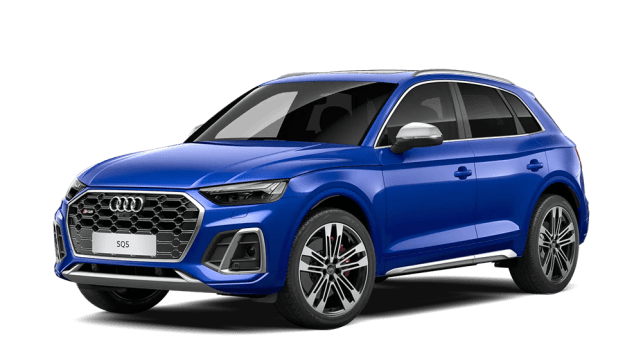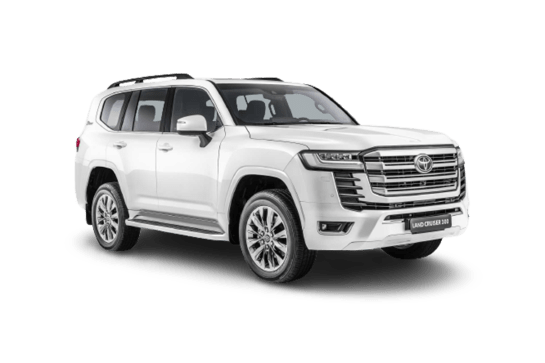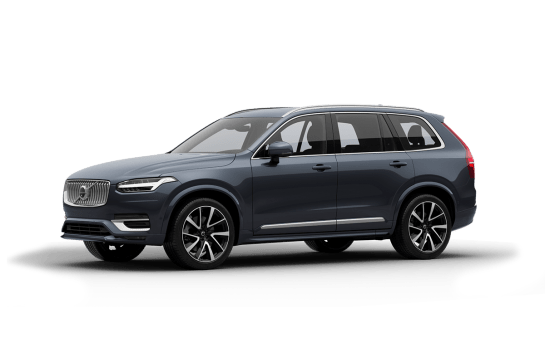
Mercedes-Benz GLE-Class VS Porsche Cayenne
Mercedes-Benz GLE-Class
Likes
- In-line six engine
- Grand interior
- High-tech features
Dislikes
- Visibility
- Size
- Three-year warranty
Porsche Cayenne
Likes
- Colossal power and torque
- Comfortable and easy to drive family SUV
- Practical and spacious
Dislikes
- Four-seater only
- Gear shifter position
- Short warranty
Summary
Mercedes-Benz GLE-Class
Not so long ago, even the idea of 'coupe SUV' would have been considered just a little bit silly.
But not anymore. This almost contradictory bodystyle is well and truly here to stay, as evidenced by the expanding catalog of available models pouring out of premium automakers.
Benz tells us, for example, that coupe versions make up some 25 per cent of its GLE sales in Australia.
Which brings us to this car – the second-generation GLE coupe. We were sent to its international launch to find out what’s new, what’s changed, and what Benz has in store for the Australian market, come its arrival in Q3 of 2020. Read on to find out what we discovered.
| Safety rating | |
|---|---|
| Engine Type | 2.0L turbo |
| Fuel Type | Diesel |
| Fuel Efficiency | 6.9L/100km |
| Seating | 5 seats |
Porsche Cayenne
The Porsche Cayenne Turbo GT needs a better name. This is the king of Cayennes and quite possibly the ruler of all super SUVs.
Well, the Cayenne Turbo GT is the fastest SUV around the Nurburgring Nordschleife. Not just that, it has such colossal power and torque it'll be side-by-side with a Porsche 911 GT3 RS in a sprint from 0-100km/h. No, a better name for this SUV would be the Cayenne GT3.
Which is perfect for me because I'm at the point in my life where although I love full-on and noisy cars I also have a full-on and noisy family.
Read more about
- "Who would have thought Porsche would go electric?" Porsche boss hails Taycan's "overwhelming success"
- Porsche doesn't need support from Volkswagen or other sports car brands on eFuels - but Lamborghini, Bentley and more could all benefit from it in the end
- When is the new Porsche Cayenne electric car coming? Timing confirmed for new BMW iX, Kia EV6 rival, and more details on new larger electric SUV revealed!
We lived with the Cayenne Turbo GT for a week to find out if this super SUV was also a super family car - from practicality to safety.
We're also a family with ridiculously high expectations of luxury SUVs having lived with and tested each of the Cayenne Turbo GT's rivals - from the Lamborghini Urus and Bentley Bentayga to the Aston Martin DBX and Alfa Romeo Stelvio Quadrifoglio.
| Safety rating | — |
|---|---|
| Engine Type | 4.0L turbo |
| Fuel Type | — |
| Fuel Efficiency | 12.5L/100km |
| Seating | 5 seats |
Verdict
Mercedes-Benz GLE-Class7.6/10
Whether you like Coupe SUVs or not is an entirely subjective matter, but there’s no denying the GLE 53 is a tech and spec showcase – some of the best Mercedes has to offer. If you can get past its relatively enormous dimensions and naturally compromised visibility – it’s even a hoot to drive.
The significant proportion of GLE consumers who are picking one of these over the regular version will be pleased with its many improvements. We’ll know more about how its price and specification lines up against primary rivals closer to its Australian launch date, so stay tuned.
Note: CarsGuide attended this event as a guest of the manufacturer, with travel and meals provided.
Porsche Cayenne8.1/10
Of all the super SUVs I've piloted, the Porsche Cayenne Turbo GT is the best all-rounder in terms of performance, comfort, cabin technology and style.
As a family car it's roomy, practical and easy to use and drive daily.
As a performance car the Turbo GT is stupidly quick, with the agility of a sports car. Sure, a 911 would leave it behind on a twisty race track, but this SUV is close to having that sportscar experience and keeping your family, as well.
Design
Mercedes-Benz GLE-Class8/10
The GLE Coupe has improved so much in its looks it’s easy to see when it came to the second-generation GLE underpinnings, Benz had it planned from the beginning.
It looks mean, especially the 53 with its giant toothy grille. The stance is low and wide for an SUV, and I’m especially a fan of the much more resolved rear end.
It’s less bulbous and frumpy, more slick and menacing, rounded out nicely by the flick of a lip spoiler jutting out the rear.
You might think proportionally, the very idea of a coupe SUV is silly, and there’s no denying that, but then, you and I might not be the target audience.
That audience is someone looking for an avant-garde take on what a sports car actually looks like. They will be pleased – I’d say its even more resolved than BMW’s X Coupes and a little less science-fiction than Audi’s Q8. The incoming Coupe version of the Porsche Cayenne will be a real challenger.
The presence the GLE Coupe exudes extends to the inside, where there’s plenty of Mercedes wow factor. Level what you might at the brand’s use of silver fittings and flat dual-screen set-up, there’s no denying Benz offers an interior entirely unlike its competition.
The GLE has one of the best of the recent Benz interiors, too. I love the way the big dual-screen set-up is framed in a 'leather'-clad bay of vents.
I also like the real wood trim on our test car which runs across the dash and flows into the doors, and of course the wholly unnecessary vent-overload (becoming a Benz signature) pride of place in the centre of the dash.
It’s complemented by the tape-deck style silver switches for the climate controls which protrudes underneath.
The materials are great, with Artico trim running down the centre console, and across each doorcard. Almost every surface you’ll reasonably come into contact with is soft, and the commitment to real metals and wood is admirable.
Other highlights include the comfortable seats (with heating which extends into the armrests!) and AMG wheel which is flashy and aggressive, well suited to such a gratuitous vehicle.
Porsche Cayenne
This might be a personal thing but to me nearly all Porsches look better from the back than the front.
It's the wide stance and powerful haunches, the hunkered down suction-capped-to-the-road look that does it for me and the Cayenne Turbo GT, despite being an SUV, passes this important Porsche checklist item.
The GT aero kit only serves to make this SUV look more of a beast, and the gold-bronze looking satin Neodyne wheels are a Porsche theme that I've not always been a fan of, but I get the historic connection.
If only the Turbo GT could look a little less like other Cayennes from the front. This is the king of the SUV range and despite the apron and bumper already being exclusive to this model, there should be more.
Vents in the wheel arches, carbon bonnet with nostrils GT3-style perhaps? Or is that going too far? If you do want something more lairy then there's always the Urus.
The Cayenne Turbo GT's cabin is stunning in its plushness and modern surprises such as the passenger display, the hoodless instrument digital cluster, the lashings of Race-Tex upholstery everywhere. It's perfectly Porsche. High-performance meets high-end.
It's also highly practical. Let's talk about that.
Practicality
Mercedes-Benz GLE-Class7/10
Naturally, the entire idea of shaving a solid bit of roof off of an SUV is going to compromise the amount of ‘practicality’ you get from such a large footprint.
Those compromises are not only there, but they are quite obvious. The sheer height of the GLE makes peering over the edge of the bonnet difficult for parking, and the sloped roofline causes the A-pillar to eat quite a bit of your field of vision.
As you might imagine, it’s genuinely difficult to see much out of the back of the GLE Coupe. I caught myself continually adjusting the rear vision mirror – as though somehow it would grant me more vision out of the letterbox rear window.
While front passengers get away with plenty of room, rear passengers are a little harder done by. This is again, largely due to the roof pillar, which eats into headroom and gives the cabin a claustrophobic feel.
Thankfully, legroom is fantastic (largely due to that massive GLE platform), the trim is all just as good as it is in the front seats, and the back of the centre console gets its own set of climate controls, adjustable air vents and USB-C power outlets.
I’d hardly say there’s an abundance of bottle holders for occupants, but there are a few. They aren’t big or packaged in ideal locations, but you’ll be able to get away with four 300ml containers in the front and four in the rear.
The boot has been re-worked from the GLE Coupe’s predecessor, there’s five extra litres on tap, for a total of 655 litres (VDA) – so it’s far from useless, but still down significantly from the full size GLE which has a massive 825L of space.
Benz has made the boot more useful, too, lowering the sill by 60mm for easier access.
Porsche Cayenne
The Porsche Cayenne Turbo GT only makes one compromise on practicality and that's the removal of the middle seat in the back, which, with just two kids isn't used all the time but on average we might need it once a week for school mates and cousins.
Instead of a middle seat there is a shallow tray, which will fit a phone or in our case leaves and rocks found at the park.
So, yes, the Turbo GT is a four-seater only, but this is a spacious, large SUV with good head and legroom, wide-opening doors for easy entry and exit, and air suspension which can raise and lower the height for easy access.
Storage is excellent with enormous door pockets in the front and back and there are four cupholders.
There's a wireless phone charger in the front and two USB-C ports as well, plus two USB-C sockets in the back.
Four-zone climate control means the kids in the back can set their own temperatures. They also have heated seats.
I was disappointed to see there aren't sunshades for the rear windows - pretty vital in Australia where it feels like we're only about 50 metres away from the sun.
The Turbo GT's 576-litre boot just managed to fit our pram and a week's shopping, which is our minimum standard for living. Any more space is a bonus.
Price and features
Mercedes-Benz GLE-Class7/10
There’s no dancing around the fact that the GLE Coupe is a niche, gratuitous product, targeted at a well-off consumer.
We don’t know what the pricing will be for the Australian range yet – and we won’t for a few months. But what we do know is Mercedes-Benz will only bring two highly specified variants to our market for the launch.
Those two will be the AMG-tuned GLE 53 which we were able to test at the launch, and a slightly lesser specified GLE 450.
Expect tall pricing, north of the wagon bodied GLE 450 ($111,341) for the 450 Coupe and outgoing GLE 43 Coupe ($145,829) for the GLE 53 Coupe.
The GLE Coupe will go into battle against the new BMW X6 (from $121,900) and Porsche Cayenne (from $116,600) and Audi Q8 ($128,900)
Standard features, as with the rest of the second-generation GLE range will be pretty good. We don’t know exactly what Australian-specified vehicles will get, but the GLE 53 as tested in Europe came with an extensive list of items.
You can expect all variants to get 20- to 22-inch alloys, electric tailgates, LED headlights, and Benz’ signature ‘Artico’ faux leather interior trim. The 53 also had a swish fully RGB adjustable interior ambient lighting suite and real wood in the dash. Very nice.
All GLE Coupes will have the impressive MBUX (I’m told it’s said “em bee you ex”, not “em bucks”) digital dash and multimedia suite, consisting of two 12.3-inch screens, one a digital dash, the other a multimedia screen.
The flashy setup also supports Apple CarPlay and Android auto as well as the usual connectivity via Bluetooth and packs several USB C outlets alongside Aux and USB 2.0. Our test 53 had a head-up display, too.
Mercedes’ built-in assistant (summoned by uttering 'Hey Mercedes') has perhaps the best native voice recognition on the market in terms of its accuracy and what it can do.
You can do things like adjust air conditioning, open the sunroof shade (oh yes, the GLE comes with a panoramic sunroof, too), and even find your specific music tracks via internet radio.
Then there’s the built in nav suite which is also one of the better ones on the market, featuring some very cool innovations.
The system will switch to the forward-facing camera when approaching an intersection and show you where to exit using augmented reality. Neat.
The 53’s system is also uniquely adjustable with AMG-specific themes and modes for the dash cluster, setting it apart from the lesser GLE 450 when it arrives.
It’s safe to assume there will be an extensive options list, including the 'E-Active Body Control' system (a $13,000 option on the wagon version) which uses cameras to detect road quality and optimize the air suspension system to suit. It also leans into corners. We’re keen to test it when it becomes available on the GLE 450.
Porsche Cayenne
The Turbo GT is the king of Cayennes, so it shouldn't surprise anybody that it's also the most expensive with its list price of $364,700.
Lamborghini's Urus lists for $409,744 and is the Cayenne Turbo GT's not-so-subtle Italian cousin, sharing the same platform and engine.
Both are in my mind the best performance SUVs on the planet. It just depends how conspicuous you want to be.
Then there's Bentley's V8 Bentayga which isn't blessed with the Porsche's good looks but would still be all over the Cayenne if the two happened to meet at a race track.
So, why is the GT Turbo the king of the Cayennes? What makes it better? For all the reasons you'd think - it's the fastest, most powerful, most luxurious and most equipped Cayenne in the range.
We'll get into mind-bending engine and performance specs soon, but first let me take you through the standard features on a car that's anything but standard.
Coming standard and exclusively to the Turbo GT are 22-inch 'GT Design' wheels in satin 'Neodyne' with full-colour Porsche centre caps, an active rear spoiler, Turbo GT front apron, dual titanium exhaust, rear apron with diffuser, 'SportDesign' side skirts, wheel arch extensions, a lightweight carbon roof and tinted LED HD-matrix headlights.
Inside, and also exclusive to this grade, is the 'GT Interior Package' with 'Race-Tex' upholstery throughout with 'Deep Sea Blue' stitching on the front seats and centre console and the armrests and dashboard.
There's also the 'Carbon Interior Package' which includes dashboard and door trim elements.
Race-Tex trim is applied to the 'GT Sports' steering wheel, roof lining and gearshift, too.
The adaptive active air suspension, which can lower the car by 15mm, is standard and only available on the Turbo GT, too.
The soft-close doors are standard (a cost option on lower grades), as are the stainless steel pedal covers.
The rest of the features are also found on lower grades and include the 12.65-inch digital instrument cluster, head-up display, proximity unlocking, 12.3-inch multimedia touchscreen with sat nav, wireless Apple CarPlay and Android Auto, digital radio, a 10-speaker Bose sound system, heated front seats, rear privacy glass and an auto tailgate.
Four-zone climate control is standard on the GT Turbo, too, and so are heated rear seats.
Our car had several options fitted such as the front passenger display ($2860) and the Deep Sea Blue Accent Package.
The passenger display is a crowd pleaser, but as a family car my kids felt like they were missing screens in the back seats, too. Well, in my day...
Under the bonnet
Mercedes-Benz GLE-Class8/10
Australia will only get one engine in the GLE Coupe – a 3.0-litre 48-volt mild-hybrid in-line six-cylinder twin-turbo petrol.
There will be two states of tune. The 450 will be able to make use of 270kW/500Nm, while the AMG-spec GLE 53 we were able to drive at the launch has more power still (thanks to extra hybrid augmentation on the turbo) for a total of 320kW/520Nm.
For a quick comparison, the single-variant Q8 produces 250kW/500Nm from a twin-turbo V6, while the equivalent X6 – the M40i packs a 3.0-litre twin-turbo in-line six to make 250kW/450Nm.
The GLE 53 has a nine-speed auto transmission which is specially tuned by AMG to go with the expanded list of available drive modes. All Australian GLE Coupes will be all-wheel drive via a permanently active '4Matic+' system.
Porsche Cayenne
As a middle-aged parent with two children, a Porsche that I don't have to crawl into and out of like a cubby house is a great thing.
What's even better is that this ‘easy access' Porsche is every bit as brutally powerful and fast as the quintessentially ‘pure' Porsche, the 911. Actually, it's more powerful and faster.
The Turbo GT's twin-turbo 4.0-litre V8 petrol engine makes 485kW and 850Nm with drive going through an eight-speed transmission to all four wheels.
In comparison, a Porsche 911 GT3 RS, arguably the most brutal and anti-social 911, has 386kW/485Nm.
I haven't made a mistake. Those are the real numbers. And it's only when you step on the accelerator in the Cayenne Turbo GT, and it feels like somebody's sat down on your chest, that you realise what a big deal this is.
That is such a colossal amount of oomph that this 2.2-tonne family SUV can accelerate from 0-100km/h in 3.3 seconds.
The 911 GT3 RS can do it in 3.2 and it has a roll cage and a fixed rear wing the size of a bedroom door.
And yes, we're now coming into a digital age where Teslas and other electric SUVs are quick, too, but can they go around corners like a Porsche Cayenne Turbo GT?
Do they have the same rumble and roar as a twin-turbo V8 that's terrifying and enticing at the same time.
The correct answer is, absolutely not.
Efficiency
Mercedes-Benz GLE-Class8/10
The claimed combined cycle fuel consumption figure for the GLE 53 Coupe is 9.3L/100km, and while that’s not bad for something this heavy – keep in mind it’s an NEDC figure and not the widely-used WLTP figure so it could be a bit different by the time the GLE Coupe launches here.
Regardless, the fuel consumption is helped along by the abundance of ratios in the transmission and 48-volt mild-hybrid additions which help to remove inefficiencies from the drivetrain.
Our sweet but brief drive route in the Austrian Alps was not a fair reflection of fuel consumption, so we don’t have a real-world figure for you yet.
Expect the GLE 53 to require premium 98 RON unleaded petrol to fill its 65-litre fuel tank.
Porsche Cayenne
Seriously? This is a 2.0-tonne twin-turbo petrol V8 with a 90-litre fuel tank. Even the Porsche specs sheet doesn't understand the question because in the column for fuel efficiency there are three letters - tbc.
My own testing saw me record 22.5 L/100km at the fuel pump, which means I enjoyed driving the car very much.
A little digging around reveals Porsche globally claims the Turbo GT will use 12.6L/100km, over a combination of open and urban roads.
You might not have as much fun as I did but easing back a little might get you closer to the 700km of range this more frugal consumption figure appears to offer.
While efficient it isn't, I'm not going to mark the Turbo GT too much here because compared to its petrol rivals the fuel consumption is what I'd expect from such a high-output heavy SUV.
Driving
Mercedes-Benz GLE-Class8/10
The resurgence of the in-line six engine is a glorious thing, and it makes the GLE 53 quite a fun, if chunky, unit to drive.
Acceleration is urgent thanks to the pre-spooled first-stage turbo, and the transmission flicks through the gears like there’s nothing to it.
It’s perhaps not as 'smart' on the downshifts as competitor transmissions from Audi or Porsche, although Mercedes was keen to point out this will get better over time as the car’s computer 'learns' your driving characteristics.
Thankfully though, unless you’re in 'Eco' mode, the GLE 53 does a great job of letting you ride each gear out, giving you that signature in-line six sensation of an entire revolution range of relatively even torque distribution – a characteristic which Mercedes has gone to pains to perfect on a turbocharged engine.
This has the result of letting you bask in the sound for precious extra seconds.
While not as furious as preceding V8s – it is distinct. It’s refined and rich, although more subdued than you might have come to expect from vehicles wearing the Affalterbach badge.
I’m a fan. It’s an engine befitting a more refined sports machine than a garish statement.
The AMG suspension tune was great, too, keeping the massive Coupe truly under control in the corners, while soaking up bumps (which we’ll admit, there were few of on Austria’s immaculate roads).
It was interesting to read colleague Matt Campbell found the standard suspension less than impressive on the regular SUV-shaped variants, so we’ll see what the more basic set-up on the 450 is like at the Coupe’s launch.
I have no complaints about the steering, which proved to be responsive, smooth and accurate, while not erring too far on the heavy side, even in 'Sport' or 'Sport+' mode.
My main complaints lie with outward visibility and the sheer size of the GLE’s body. There were some nerve-wracking moments piloting it at speed around narrow streets with tall snow embankments encroaching.
And no matter how much I adjusted my seat and mirrors, the view out the back was particularly compromised.
Porsche Cayenne
Never have I met a car this powerful and superbly athletic that is as pleasurable to drive alone on great, fast roads as it is to pilot at 50km/h in the suburbs with a family on board.
It exceeds my understanding of engineering that something this large can move so quickly. That in an instant can turn and tip into a corner with such precision and effortlessness.
Yet it can switch seamlessly and happily to coping with speed bumps and potholes, delivering a ride so comfortable it'll send babies off to sleep. And it did.
The only issue, and this is such a tiny thing, is the dash-mounted gearshift, which means having to reach up and select Drive or Reverse or Park, which, when executing a three-point turn, is necessarily frustrating.
Still, I'm giving the Turbo GT a 10 out of 10 for driving under all conditions, and we didn't even go off-road, which of course you can do, as long as it's not too wild.
Safety
Mercedes-Benz GLE-Class8/10
We don’t know exactly how Australian cars will be specified yet, but expect the two GLE Coupes to come with flagship active features like high-speed auto emergency braking (AEB), lane departure warning with lane keep assist, blind spot monitoring, rear and front cross traffic alert, adaptive cruise control, 360 degree parking sensors and cameras, fully auto LED headlights, semi-autonomous parking, and driver attention alert.
The GLE has nine airbags and dual ISOFIX child seat mounting points in the outer rear seats.
Regular wagon bodied GLE class vehicles have maximum five-star ANCAP safety ratings as of 2019, and we’ll update you when we hear more about the Coupe variants.
Porsche Cayenne
The Porsche Cayenne Turbo GT hasn't been locally crash tested and so doesn't have an ANCAP rating.
That's quite normal for super high-end cars. But, when this third-generation model first arrived in 2017 it was tested by ANCAP's European equivalent, Euro NCAP, and was awarded the maximum five stars.
There's AEB which operates at city, urban and highway speeds, and lane keeping assistance, and lane change assistance which is a form of blind-spot warning, and adaptive cruise control. You can option rear cross-traffic alert, as well.
A space saver spare wheel is under the boot floor.
Ownership
Mercedes-Benz GLE-Class7/10
Mercedes continues with its three-year/unlimited kilometre warranty which is frustratingly standard across European premium car manufacturers in Australia– particularly its primary competitors, Audi and BMW. We doubt this will change any time soon.
Like VW Group competitors, though, Mercedes is now bundling in service costs in packages which can be tacked on to finance. The GLE requires servicing once a year or every 15,000km – we’ll update you on the cost of the packages closer to the Coupe’s local launch.
Porsche Cayenne
The Cayenne Turbo GT is covered by Porsche's three-year, unlimited kilometre warranty, which is lagging behind in terms of duration even compared to other luxury brands such as Mercedes-Benz, which offers five years.
Servicing is recommended annually or every 15,000km, although there isn't a capped price maintenance plan with final costs determined at the dealer level (in line with variable labour rates by state or territory).






























